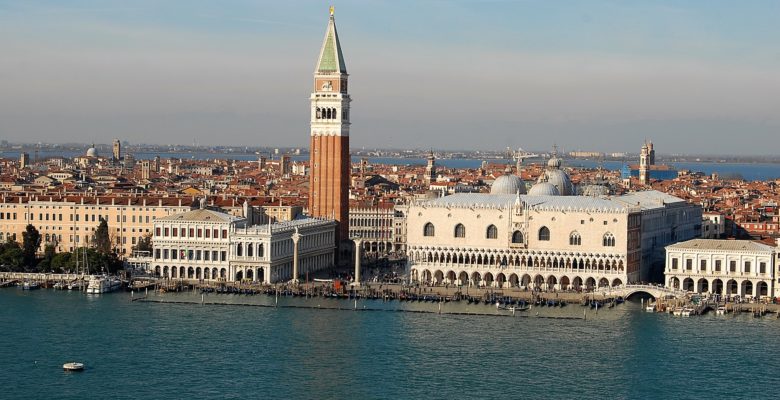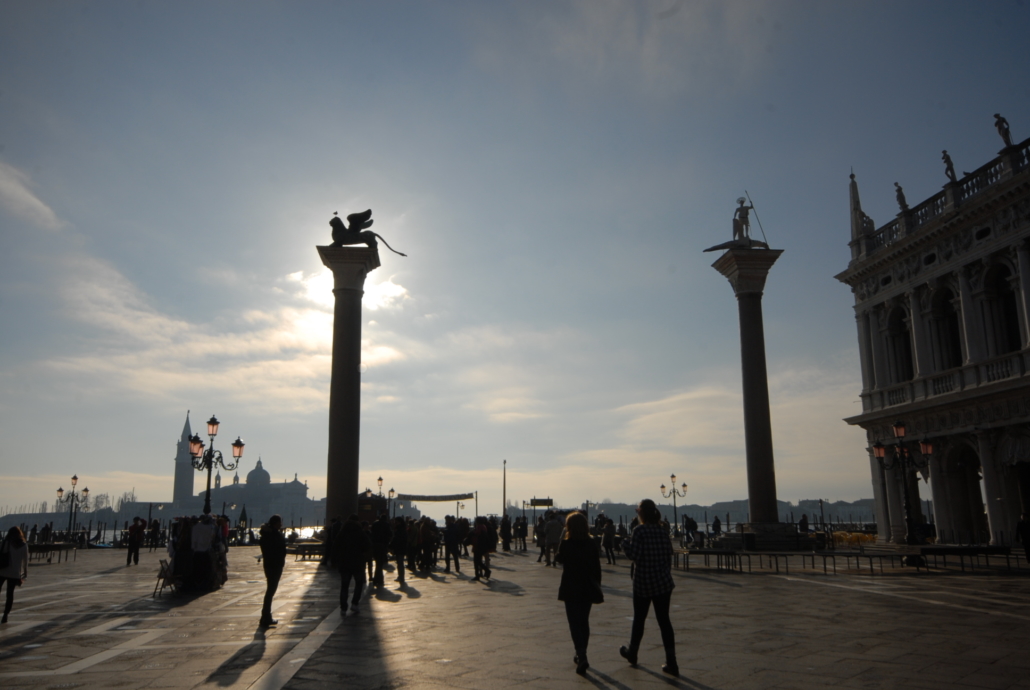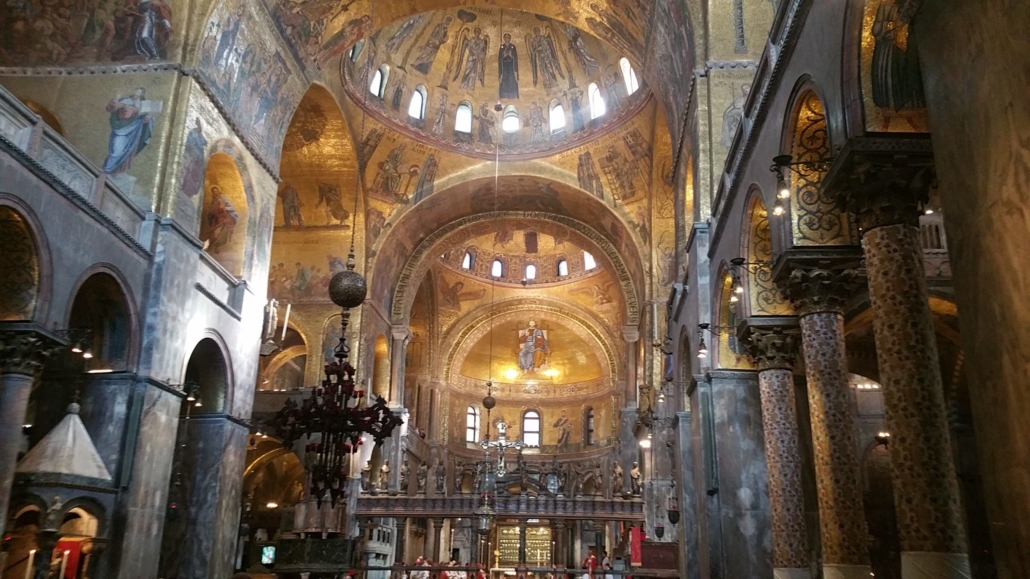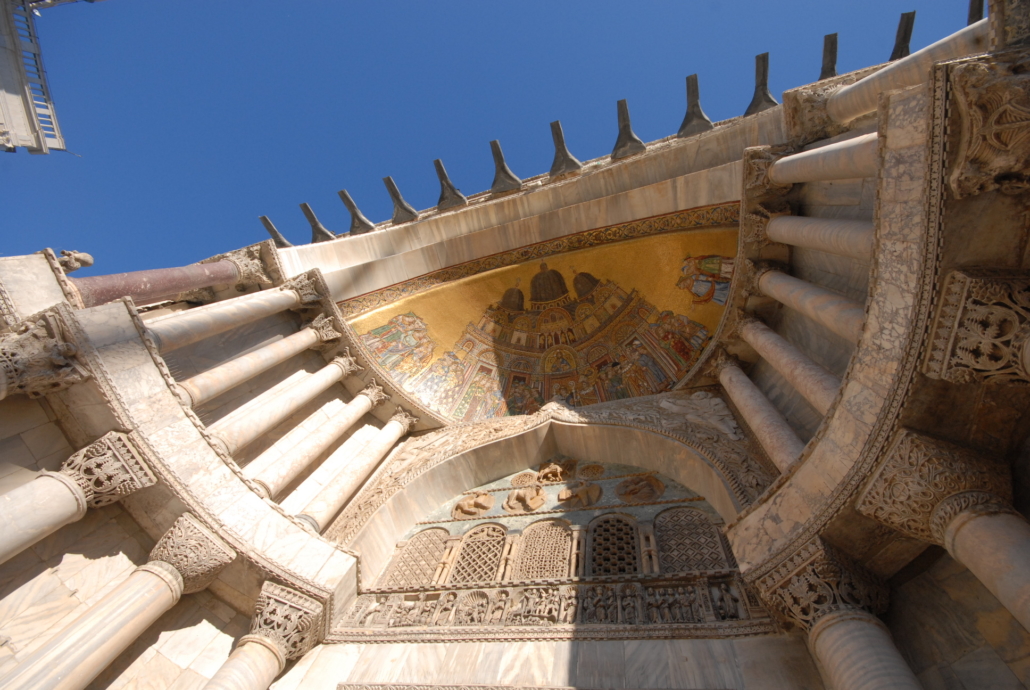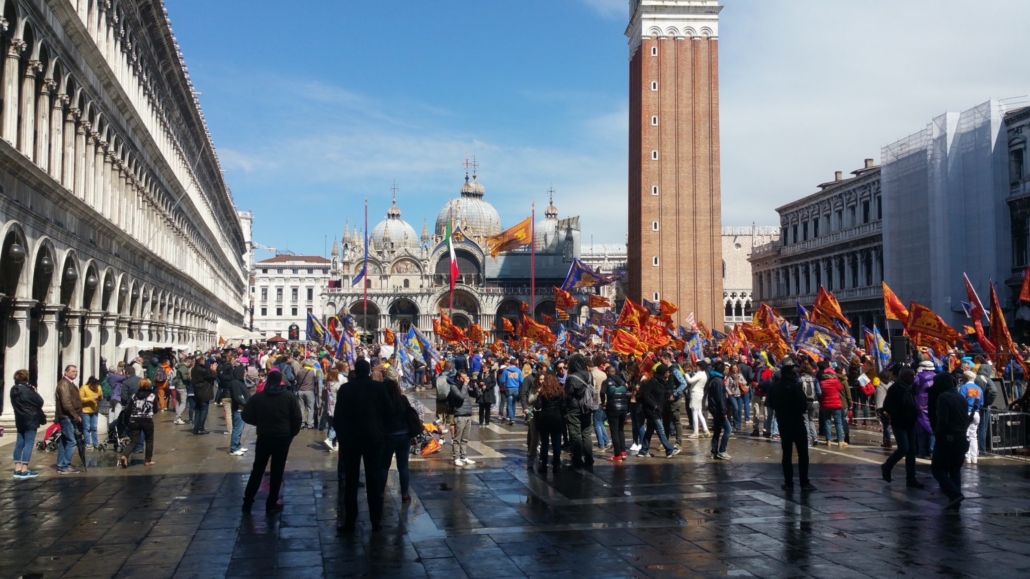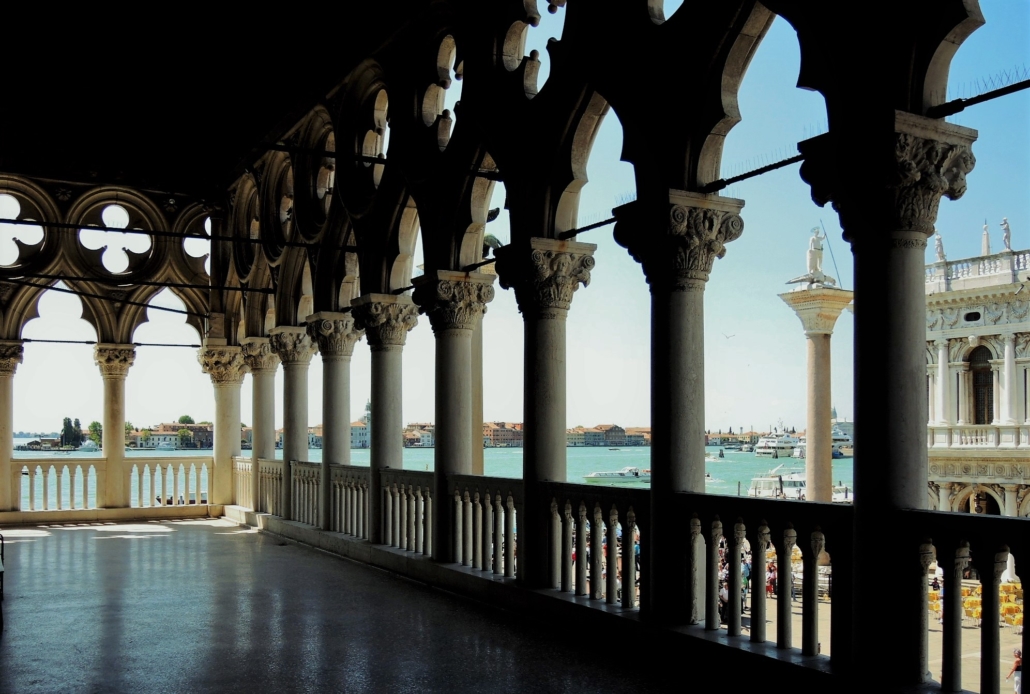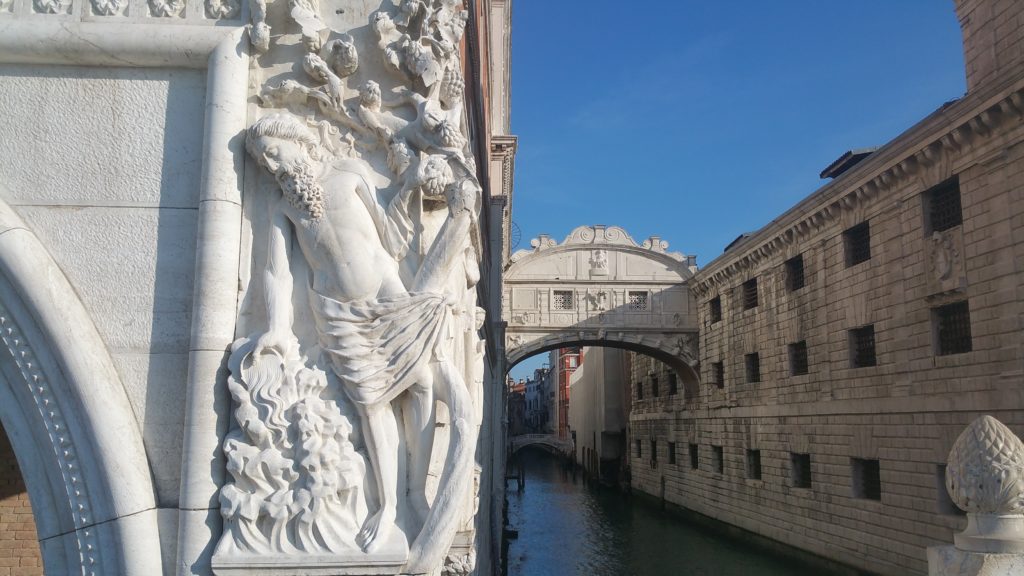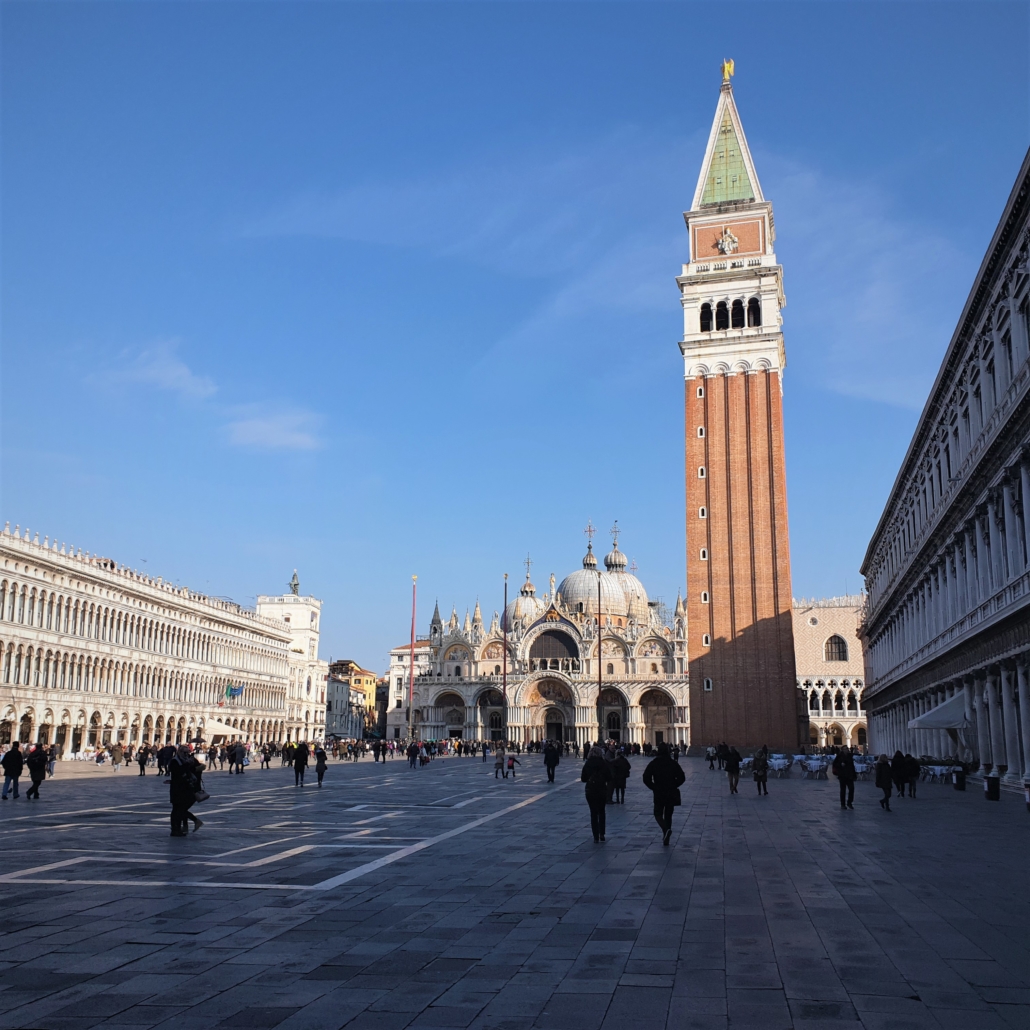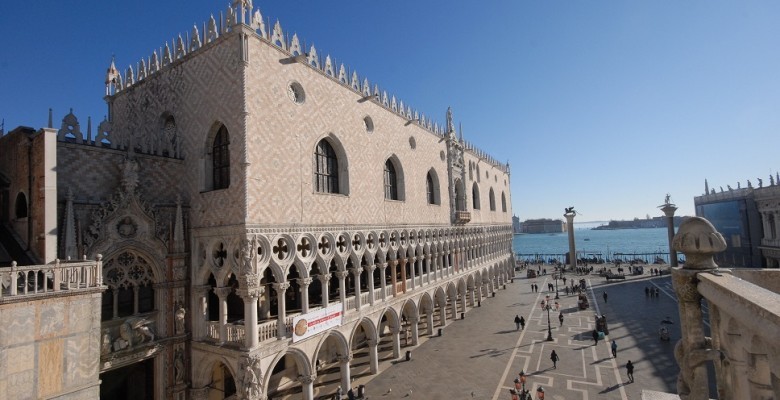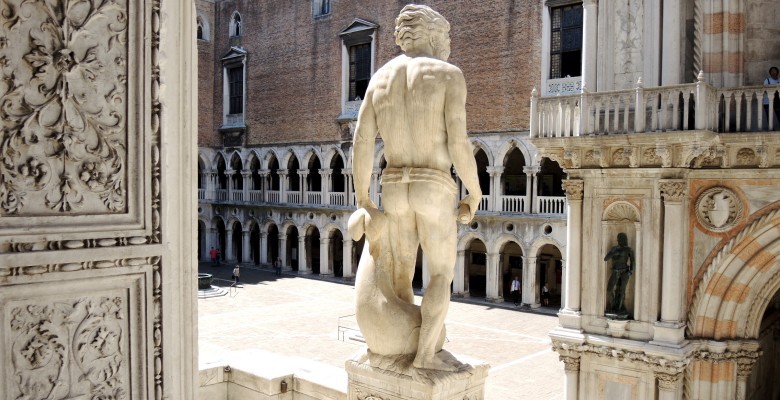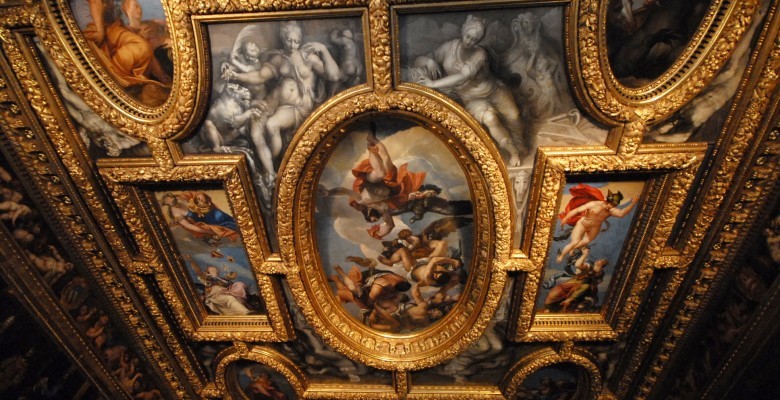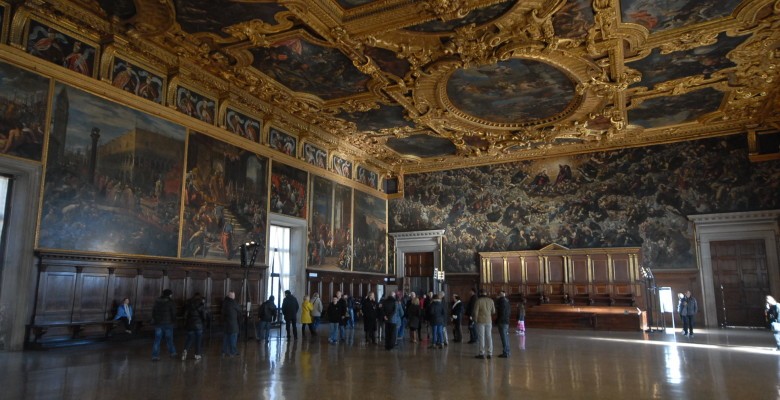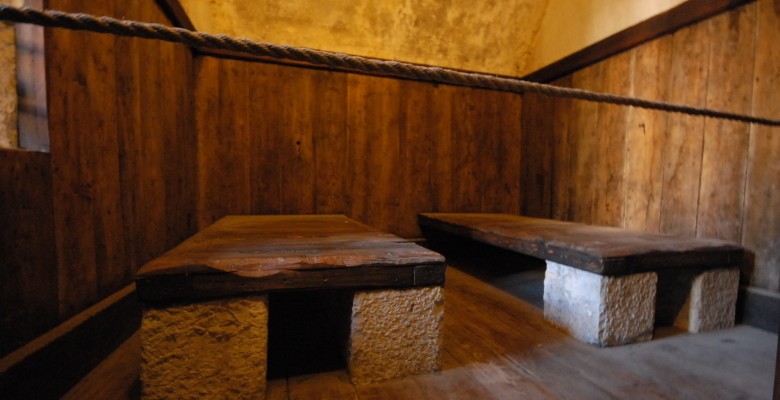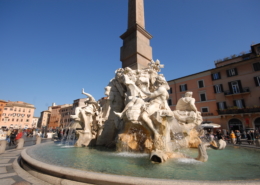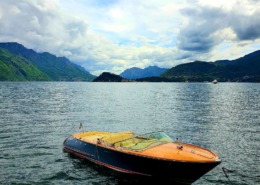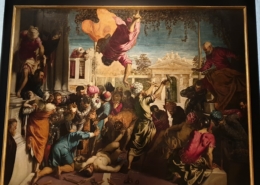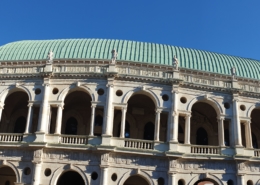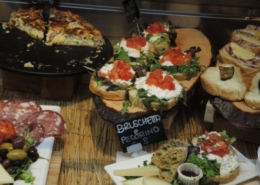But things went wrong for the Venetian tradesmen in Constantinople, and they were expelled from the city.
As a revenge, Venice led and diverted the Fourth Crusade, moving it against Christian Constantinople, that was sieged in 1204, conquered and sacked systematically during the following decades. They shamelessly looted churches and monasteries to bring ‘things’ to Venice!
St Mark’s Basilica changed its skin. Over 80 kinds of marble cover the fantastic floor and the lower part of the walls in and out the Basilica,
If you look up you’ll notice that the upper part of the building, with its major five domes and many other smaller cupulas, are not painted, but covered with many colored glass mosaics, from different hands and periods. The magic harmony of all the holy narrations and hieratic figures given by the golden mosaic in the background. Most people will remember this church, first of all, for its golden ceiling!
Upon request, we can also include in our Venice Power & Myths a visit the so called “Pala d’ Oro”, as to say the Golden altar screen.
The Pala expresses the Venetian love for gold, precious stones, and shining colors like lapis lazuli blue, red, and turquoise. Venetian painters such as Giovanni Bellini or even young Titian continued to privilege these colors. The love for beautiful textiles in manifest here, and remains as a leit motiv in Venetian Renaissance painting.
On request, we may climb the old steep staircase to the upper Loggia. The Loggia is known for both its four gilt bronze Horses, iconic symbols of Venice and for the splendid view of the Piazza below.
We will dedicate the rest of our VENICE POWER & MYTHS tour to the Doge’s Palace, seat of Venetian power for over nine centuries.
Here you will learn about the rise and fall, and everything in between, of “La Serenissima,” the Most Serene Venetian Republic.
The first Doges’ Palace was built on the same location of the present one around 810, mostly for strategic purposes, and must have looked like a military fortress.
The location, with St Giorgio Maggiore Island right opposite, permitted to stop if necessary any ship arriving from the Adriatic Sea.
There was a first rebuilding of the Palace by 1177, due to Doge Sebastiano Ziani, with the occasion of the meeting in Venice of the Pope Alexander III and Friedrich Barbarossa, Emperor of the Holy Roman Empire.
Doge Ziani also paid for the enlargement of the Square, that used to be much smaller than today. Almost nothing is left from this second construction, as by 1340 they planned a new construction on the waterfront.
This is the one we can still admire today, a fancy Gothic-Moorish architecture, with motifs that were imitated for centuries in the decoration of private houses in Venice. The style is also known as Flowered Gothic.
The facade overlooking the Piazzetta was completed only in the 1430s, as works were long postponed because of the Black Plague in 1348 and the long war with Genoa in the 1370es.
Entering the majestic court-yard you will observe a different style of the eastern wall, that was rebuilt after a fire in 1484.
The Early Renaissance design of this section of the palace is well matched with the other three wings
The Giants’ Staircase with the two ‘Giganti’ – Neptune and Mars – by Jacopo Sansovino, is often seen in movies and symbolizes the power of Venice on sea and land. The Republic renovated its style thanks to artists such as Sansovino, that settled in the city after the terrible Sack of Rome in 1527 and never left.
The best example of this artistic era here is the Golden Staircase, with its magnificent white and gold stuccoes, reminiscent of Ancient Rome, but with an exquisitely ‘Venetian’ taste for gold and lavish ornamentation.
In 1574 and in 1577 the Doges’ Palace was damaged by two big fires, and a good part of the rooms were totally destroyed.
The greatest painters of the time were Paolo Veronese, and Jacopo Tintoretto, whose very different personalities and styles create a pleasant contrast in the lusciously decorated halls of the Palace.
The number of waiting and meeting rooms witness the intricacies of the
Venetian state organization, that almost has no secrets for us, due to the 45 miles of documents still available in the archives. The topic is of great interest and your guide will try to resume…
In the 1700s the lagoon city had was already a myth: its bizarre beauty, its palaces built in the water, the fame of its painters, music, theatres were well known. On top, the unusual liberality of its rulers transformed it into a not-to-be-missed stop for all travelers on the European Grand Tour.
At the end of the century Venice’s independence is over: on May 12th, 1797, after 9 centuries of glorious, wise, business minded, tolerant governance, the political class voted itself out and peacefully surrendered to Napoleon.
The Doges’ Palace was used as municipal offices until the 1920es.
The Ducal Palace also included the Palace of Justice. At its bottom and top floors there were two small (but famous) prisons, called respectively ‘Piombi’ (one famous guest: Giacomo Casanova!) and ‘Pozzi’.
By the end of the 16th century a new building, designed to be a secure but humane and much larger jail was raised next to the main building.
Few years later the two buildings, the palace and the dungeon, were connected by a tiny covered double passage over the canal known as ‘Rio di Palazzo’, a functional passage for prisoners and their jailors. Lord Byron quotes the ‘Bridge of Sighs’ in a couple of verses of his ‘Childe Harold’s Pilgrimage’. The two verses were quoted by all early guidebooks since the 1820s and the tiny white Bridge became a must-see…and continues to be! The Jail ceased to be a jail in 1922.
We shall visit the Prison together and comment about life conditions in Venetian jails through the centuries.
If you enjoyed our VENICE POWER & MYTHS tour you might also like our Venice History for Families, including the Doges’Palace Secret Trails.

